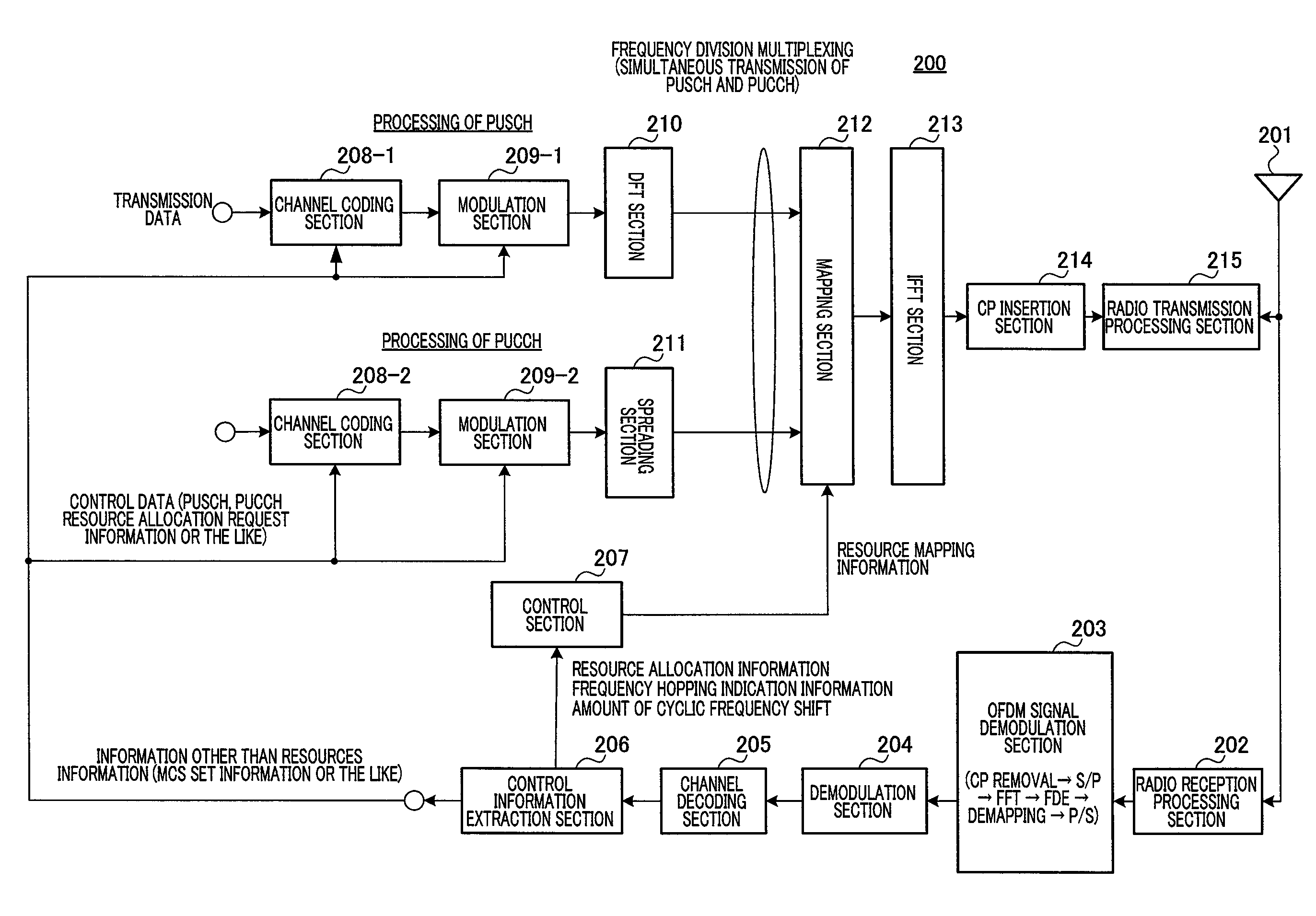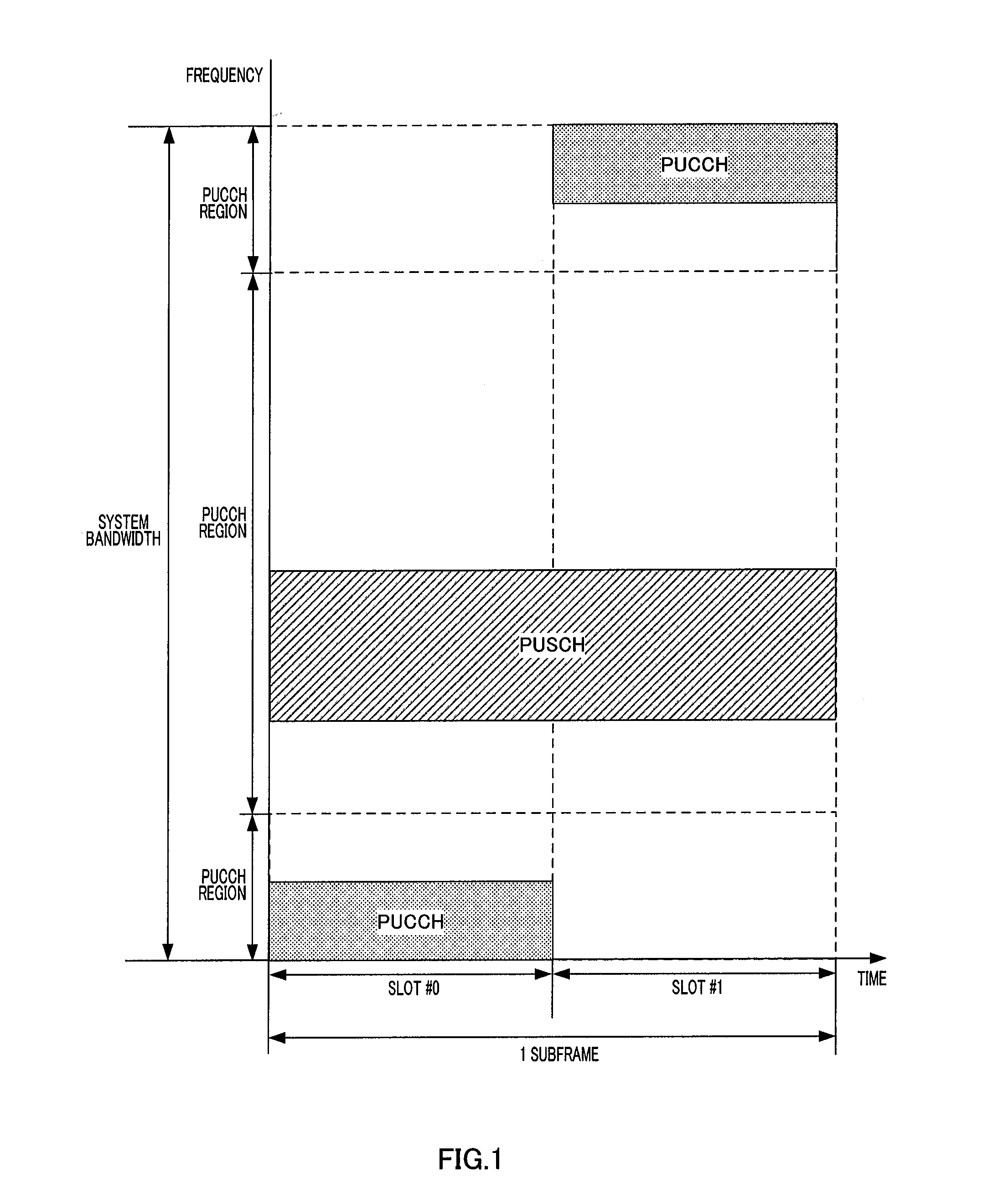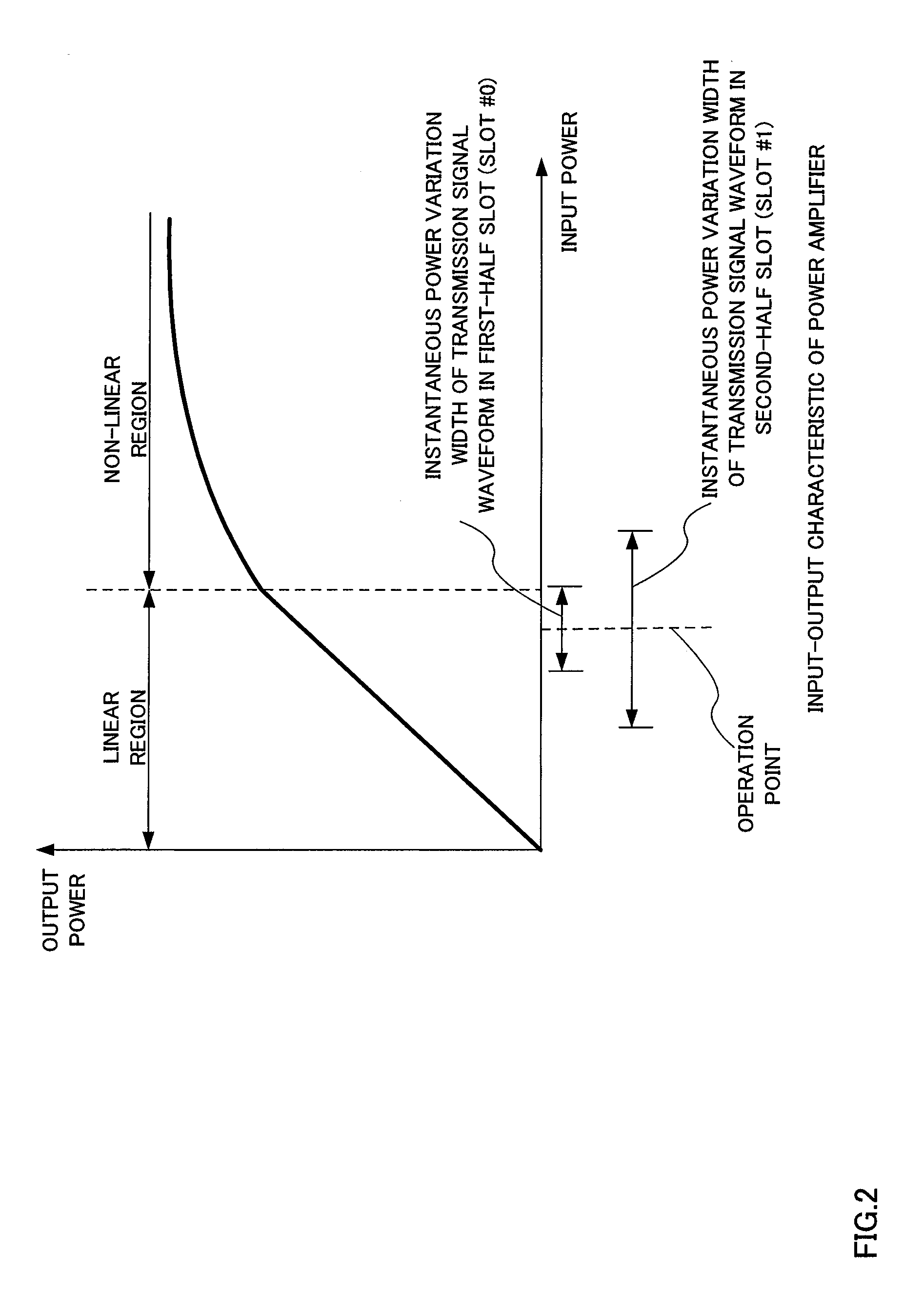Wireless communication apparatus and frequency hopping method
- Summary
- Abstract
- Description
- Claims
- Application Information
AI Technical Summary
Benefits of technology
Problems solved by technology
Method used
Image
Examples
embodiment 1
[0079]When the frequency interval between a first channel and a second channel allocated to the first slot in an IDFT (Inverse Discrete Fourier Transform) or IFFT (Inverse Fast Fourier Transform) band is B, the present embodiment cyclically allocates the second channel to a frequency resource in the second slot located B apart from the first channel within the IDFT or IFFT bandwidth.
[0080]Here, the IDFT or IFFT band may be called “system (component band) band.” In an LTE-A system, to simultaneously realize communication at an ultra-high speed several times the transmission rate in the LTE system and backward compatibility for the LTE system, the band for the LTE-A system is divided into “component bands” of 20 MHz or below, which is a bandwidth support by the LTE system. That is, the “component band” is a band having, for example, a width of maximum 20 MHz and defined as a base unit of a communication band. Furthermore, the “component band” may also be expressed as “component carrie...
embodiment 2
[0252]A case has been described in Embodiment 1 where when the frequency interval between the first channel and second channel allocated to the first slot is B within the IDFT or IFFT band, frequency division multiplexing transmission is performed based on the resource allocation rule whereby the second channel is cyclically allocated to a frequency resource located B apart from the first channel in the second slot within the IDFT or IFFT band (system band) width. The present embodiment will describe a method of setting frequency interval (frequency difference) B between a plurality of channels subjected to frequency division multiplexing transmission according to the resource allocation rule. For frequency interval B in the second slot, the same value as frequency interval B in the first slot is maintained as described in Embodiment 1.
[0253][Frequency Interval Setting Method #1-0]
[0254]Of the first channel or second channel frequency-division-multiplexed and transmitted in the firs...
embodiment 3
[0282]The present embodiment reuses the method in LTE Re1.8 that applies frequency hopping to PUCCH and PUSCH independently of each other according to the resource allocation rule for frequency division multiplexing and transmitting PUSCH and PUCCH. Furthermore, the present embodiment generates a coordinated frequency hopping pair of PUSCH and PUCCH according to the number of subbands included in the system band and resource numbers of frequency resources on which PUCCH is arranged in the first slot.
[0283]The number of subbands is set by the base station. The base station sets the number of subbands so that the bandwidth of subbands obtained by dividing the band of the system band to which frequency hopping is applied is, for example, a natural number multiple of an RBG (Resource Block Group) size. Information of the number of subbands set by the base station is included, for example, in frequency hopping indication information (or signaling information of a higher layer (RRC (Radio...
PUM
 Login to View More
Login to View More Abstract
Description
Claims
Application Information
 Login to View More
Login to View More - R&D
- Intellectual Property
- Life Sciences
- Materials
- Tech Scout
- Unparalleled Data Quality
- Higher Quality Content
- 60% Fewer Hallucinations
Browse by: Latest US Patents, China's latest patents, Technical Efficacy Thesaurus, Application Domain, Technology Topic, Popular Technical Reports.
© 2025 PatSnap. All rights reserved.Legal|Privacy policy|Modern Slavery Act Transparency Statement|Sitemap|About US| Contact US: help@patsnap.com



